Moss Removal & Gutter Cleaning is essential to protecting your property’s value and structural safety. Preventing leaks, damp, and insulation issues starts at roof level—our specialist services help properties across London and the Home Counties avoid disruption, costly repairs, and energy loss through proven, compliant techniques delivered with care.
With decades of experience, accreditations from Which Trusted Trader and CITB, and the use of premium suppliers like Welsh Slate, ALM Lead, and Kemper, our clients can trust every job to deliver long-term results. Book a free survey today and protect your property.
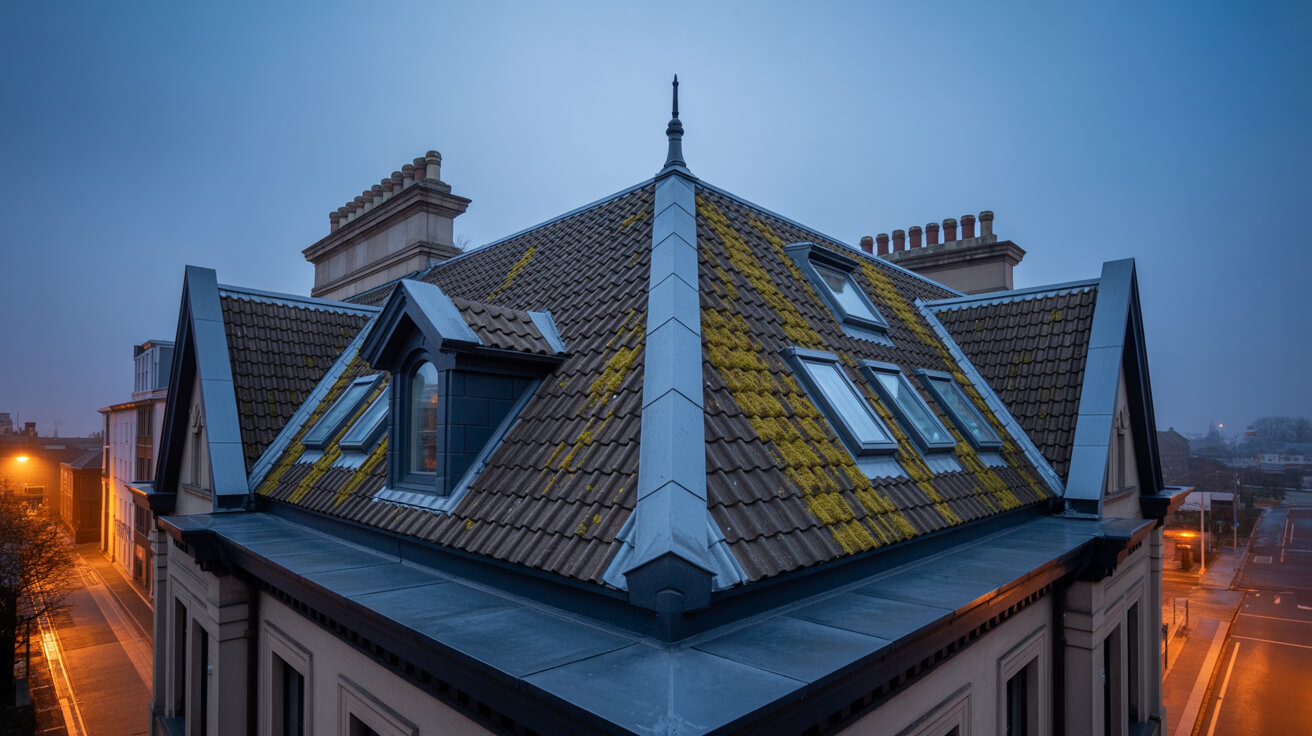
Neglecting roof moss and blocked gutters often leads to leaks, damp, insulation failure, and even structural problems—delaying action only increases future costs and risks for any property owner.
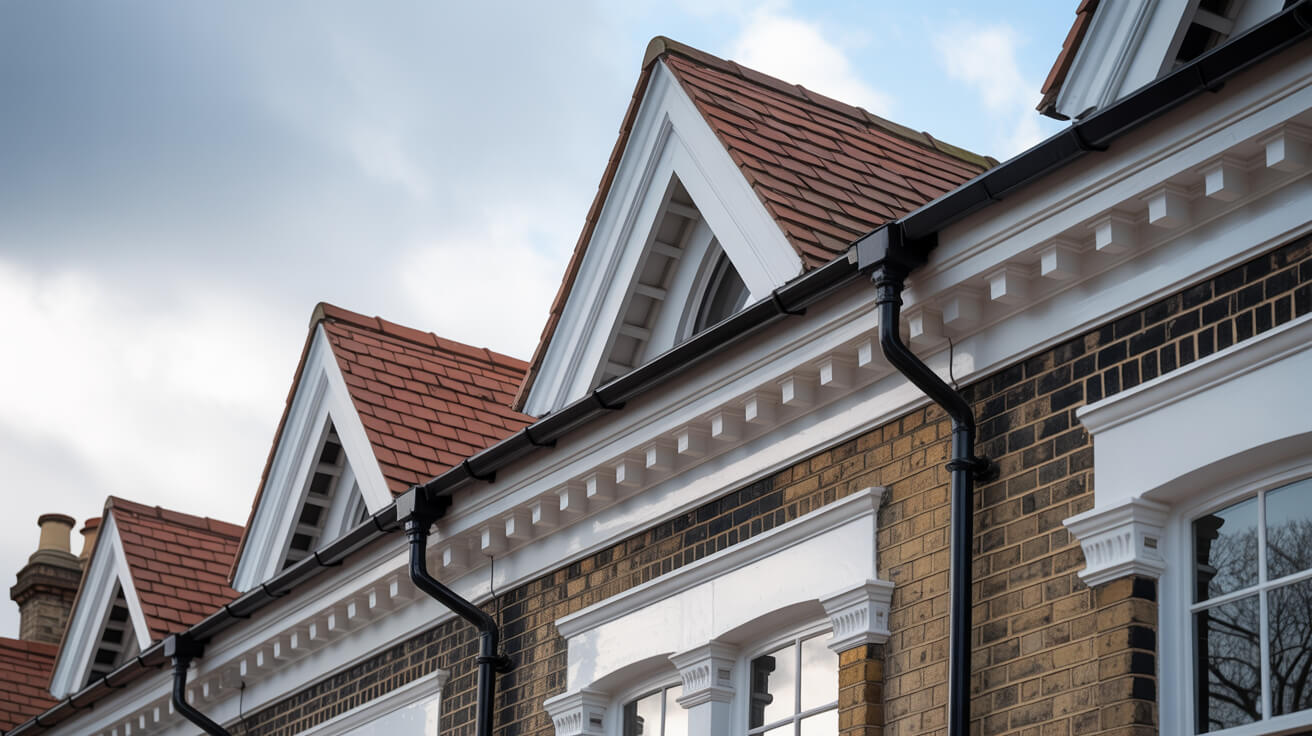
Professional Moss Removal & Gutter Cleaning fixes these hazards by improving weatherproofing, energy performance, and compliance with building regulations. Homeowners find peace of mind, landlords secure long-term value, and businesses improve safety and efficiency. Proactive maintenance is a secure investment—regardless of property type or age.
Our Moss Removal & Gutter Cleaning services cover installations, repairs, upgrades, and restorations for homes, commercial sites, and listed buildings. We deliver long-term performance and regulatory compliance using trusted materials and suppliers, adapting every service to your property for safety, durability, and satisfaction.








Every Moss Removal & Gutter Cleaning project is adapted to property type, roof structure, and environmental demands. Tailoring ensures compliance with regulations, minimises disruption, and maximises long-term value. From homes and businesses to industrial sites and listed heritage buildings, our flexible approach guarantees roofing solutions that meet unique needs while delivering safety, efficiency, and reliability.
Homes, extensions, and listed buildings.
Offices, retail, schools, and hospitality.
Warehouses, factories, and logistics sites.
Every Moss Removal & Gutter Cleaning project follows proven steps with quality materials. Whether a new installation, upgrade, or repair, each layer adds durability, safety, and efficiency—tailored to protect your property and meet regulatory standards.

Get a free, no-obligation quote today.
Our experts are standing by to help you choose the perfect flat roofing solution.
⏱ Response within 24 hours guaranteed
Accredited by Which Trusted Trader, CITB, and approved by Kemper and Westwood, our team delivers safe, compliant, and warranty-protected Moss Removal & Gutter Cleaning projects. These credentials mean guaranteed standards and long-term assurance—reinforced by the positive client reviews that consistently highlight quality, professionalism, and trust.


Complete reroofing. Living in Singapore at the time and T was super responsive and communicative.
Replacement of lead box gutter and new flashing to parapet wall. I had an excellent experience using James and the team. He was very prompt in all aspects of communication and completed a first class job. Really pleased.
James completed some repairs on our roof and replaced some of our pebble dash by the roof as well. He was very thorough and fixed everything. He kept us really informed by taking photos and showing us what he did and keeping us updated. It also went onto our neighbours roof and he did the same fo...
We had a leak in our bedroom and James fixed the roof for us to stop it from leaking. All the work came with a warranty. The work that was carried out was good. James and his team were polite, and did all the work quickly and without too much interruption to our day-to-day lives. Would recommend ...
J G Leadworks have repaired and replaced the roofs and gulleys over our warehouse and workshops which have meant both areas are now watertight
James and team were incredibly responsive to my request to look at a serious leak issue on my flat roof. They did a very thorough investigation and explained in detail the issue and gave a fair quote. They were quick to book in and complete the work and have checked in afterwards a few times to m...
James was quick to respond to the initial contact and was able to work around some time constraints I had. He explained what needed doing clearly and was happy to answer follow up questions. He took pictures to show each stage and I feel confident in the work that was done by James and the team. ...
JG Roofing were very easy to work with. Their quote was sensible and they stuck to that figure. They completed many repairs to my roof including, rebuilding a leaded gutter, reinforcing rotten rafters, rebuilding a long felted gutter and felting parapet walls, resurfacing and felting a flat roof,...
Planning and legal checks protect clients from costly errors, delays, and non-compliance, ensuring roofing projects meet regulatory and safety requirements.
Permission is typically required for listed properties, conservation areas, or major roof alterations. All projects must also satisfy Building Regulations, including Part A (structural safety) and Part L (energy efficiency), ensuring compliant and future-proofed installations.
Our team manages the full process, from initial surveys to legal guidance, preparing documentation, and liaising with local authorities where needed. Whether working on modern homes or heritage sites, we ensure every project is delivered legally, safely, and with minimal disruption—providing complete reassurance and peace of mind to property owners.
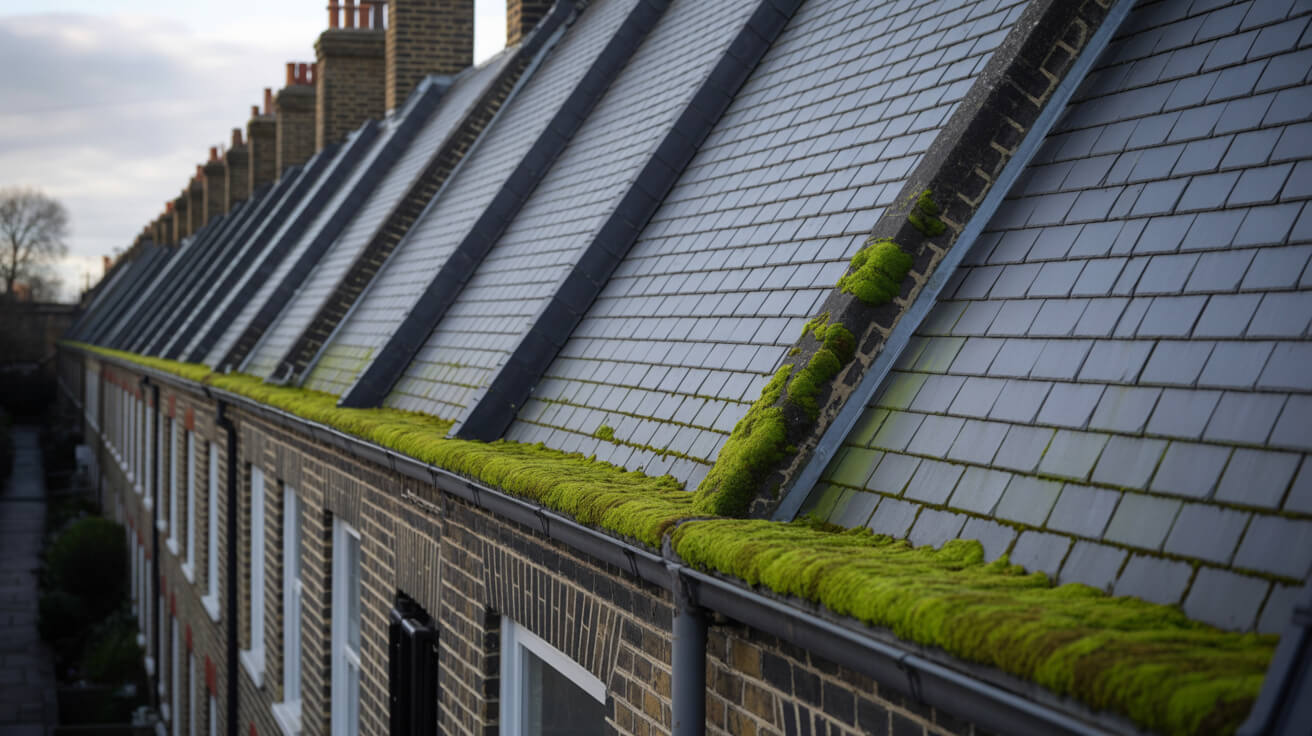
Every project unites skilled workmanship with rigorously tested materials.

With 25 years of experience in lead sheet roofing, James is a trusted expert in heritage roofing, slate, and tiling. His knowledge of traditional methods, paired with modern compliance, makes him a go-to specialist for projects that demand both craftsmanship and durability.
Moss Removal & Gutter Cleaning provides lasting protection, efficiency, and value, delivering durable, compliant roofing solutions that safeguard every type of property investment.
Selecting Moss Removal & Gutter Cleaning involves balancing durability, budget, compliance, and aesthetics to secure the best-fit roofing solution for your property.
Why Clients Choose JG Leadwork and Roofing
With decades of trade experience, our teams understand the unique demands of London and Home Counties roofing. From heritage-listed properties to contemporary extensions, we adapt solutions to local regulations, weather conditions, and architectural styles with precision.
Accredited by Which Trusted Trader, CITB, and approved by Kemper, Westwood, IKO, ALM, and other leading suppliers.
These credentials guarantee safety, compliance, and access to manufacturer-backed warranties, giving clients peace of mind that their project meets the highest professional standards and benefits from warranty protection.
Our heritage projects use Welsh Slate and handmade clay tiles for authenticity, while leadwork is delivered to Lead Sheet Association (LSA) standards. Commercial installations employ Kemper and Westwood liquid systems for durability and efficiency. Each example demonstrates our reliability, blending traditional craftsmanship with modern performance.
Our workforce includes skilled roofers, heritage specialists, and safety-certified installers.
Every roofer holds NVQs, receives ongoing CPD training, and is qualified in both modern flat systems and traditional techniques, including slate and leadwork.
Team structure ensures projects run smoothly—surveyors identify needs, installers deliver with precision, and supervisors oversee compliance. This approach minimises disruption, accelerates timelines, and guarantees consistent quality across residential, commercial, and industrial roofing projects.
Every project is regulation-compliant, warranty-backed, and focused on long-term results.
Client testimonials and case studies confirm our track record, with projects praised for professionalism, durability, and customer support.
We go beyond installation with aftercare packages, maintenance support, and open communication at every stage. Property owners gain reassurance that JG Leadwork and Roofing stands behind its work. Book a free survey today and discover why homeowners, landlords, and businesses trust us with their roofing.
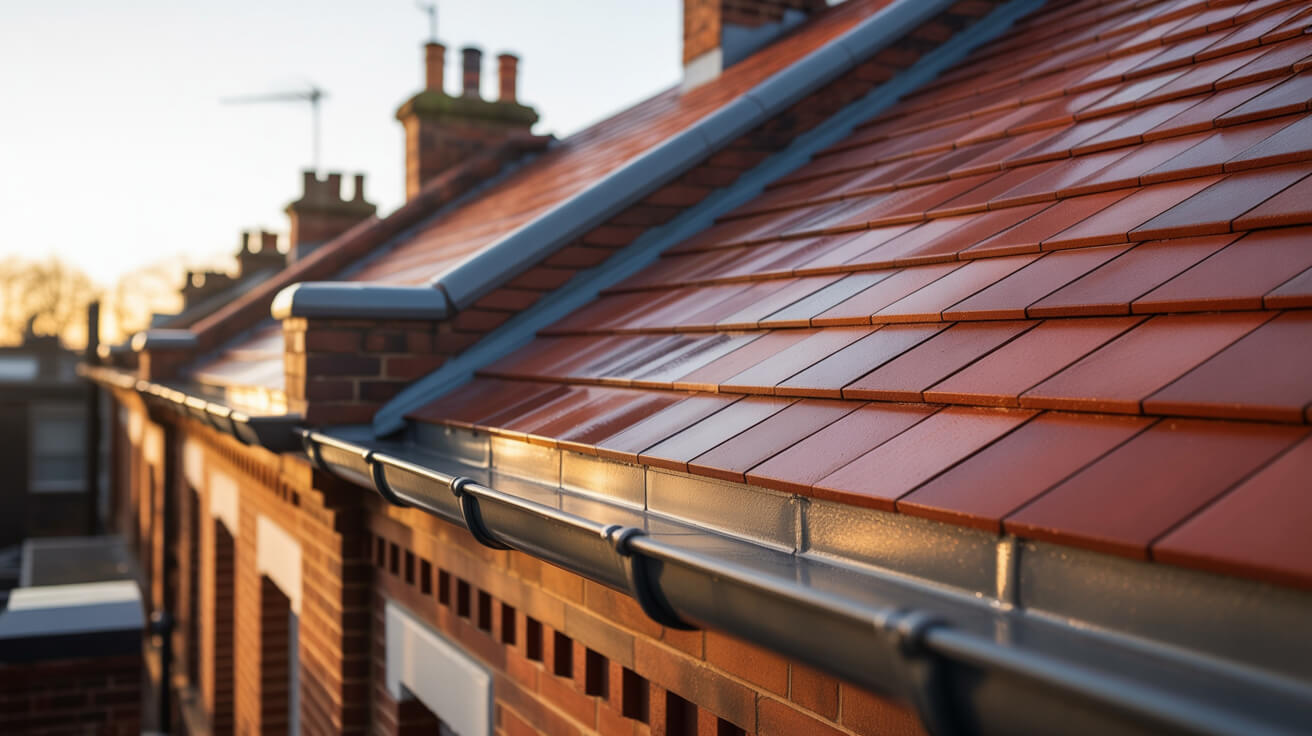
Get a free quote, rapid response, and expert service across London and the Home Counties. Contacting JG Leadwork and Roofing is your simple first step to dependable roofing solutions.
We source materials from leading suppliers including Supreme and IKO felt systems, Kemper, Westwood and Proteus liquid systems, Welsh Slate, handmade clay tiles, ALM Lead Mills, and Nicholson Air Track. These trusted brands guarantee durability, compliance, and warranty-backed performance across flat, pitched, heritage, and commercial roofing projects.
.
.
For homes, Moss Removal & Gutter Cleaning safeguards comfort and enhances kerb appeal with durable, energy-efficient systems. Whether modern extensions or traditional pitched roofs, tailored solutions improve living standards and protect property value.
For businesses, Moss Removal & Gutter Cleaning delivers cost-effective, large-scale installations with minimal disruption. Projects are planned around operations, with safety compliance, energy performance, and flexible scheduling built in—supporting offices, retail, schools, and industrial facilities with reliable, regulation-ready outcomes.
For heritage properties, Moss Removal & Gutter Cleaning combines authentic materials such as Welsh slate, handmade clay tiles, and ALM lead with skilled conservation techniques. Listed building consent and conservation requirements are fully managed, ensuring traditional character is preserved while integrating modern weatherproofing. This careful balance provides long-term durability without compromising historic integrity or aesthetic value.
JG Leadwork and Roofing delivers Moss Removal & Gutter Cleaning across housing, commercial, heritage, and public sectors. Every industry comes with unique requirements, from safety and compliance to efficiency and conservation. Our adaptability ensures projects are delivered with precision and professionalism—whether safeguarding homes, supporting business continuity, preserving history, or protecting critical public and healthcare facilities.
Durable roofing installed with minimal disruption, ensuring safe, regulation-compliant workspaces for staff and visitors.
High-standard, compliance-focused solutions protect community facilities while meeting strict safety and regulatory obligations.
Heavy-duty roofing tailored for wide spans, ventilation, and long-term maintenance efficiency.
Authentic materials and sensitive methods preserve historic character while adding modern protection.
Weatherproof systems that enhance kerb appeal and guarantee uninterrupted trading for outlets.
Tailored roofing improves guest comfort, safety, and ambience across hotels, restaurants, and venues.
Safe, durable systems designed for schools and universities with minimal learning disruption.
Specialist roofing solutions built for hygiene, safety, and regulatory compliance in medical environments.
Our team of NVQ-qualified roofers, LSTA-trained specialists, and health & safety-compliant professionals bring decades of combined experience. Every project is delivered with meticulous attention to detail, ensuring safe practices and consistent quality across flat, pitched, heritage, and commercial roofing disciplines.
Expertise includes heritage leadwork, slate and tile roofing, modern flat systems, and drone-assisted roof surveys. Ongoing CPD training ensures adaptability to both traditional craftsmanship and the latest innovations—giving clients confidence that every roof is built or repaired with proven skill and care.
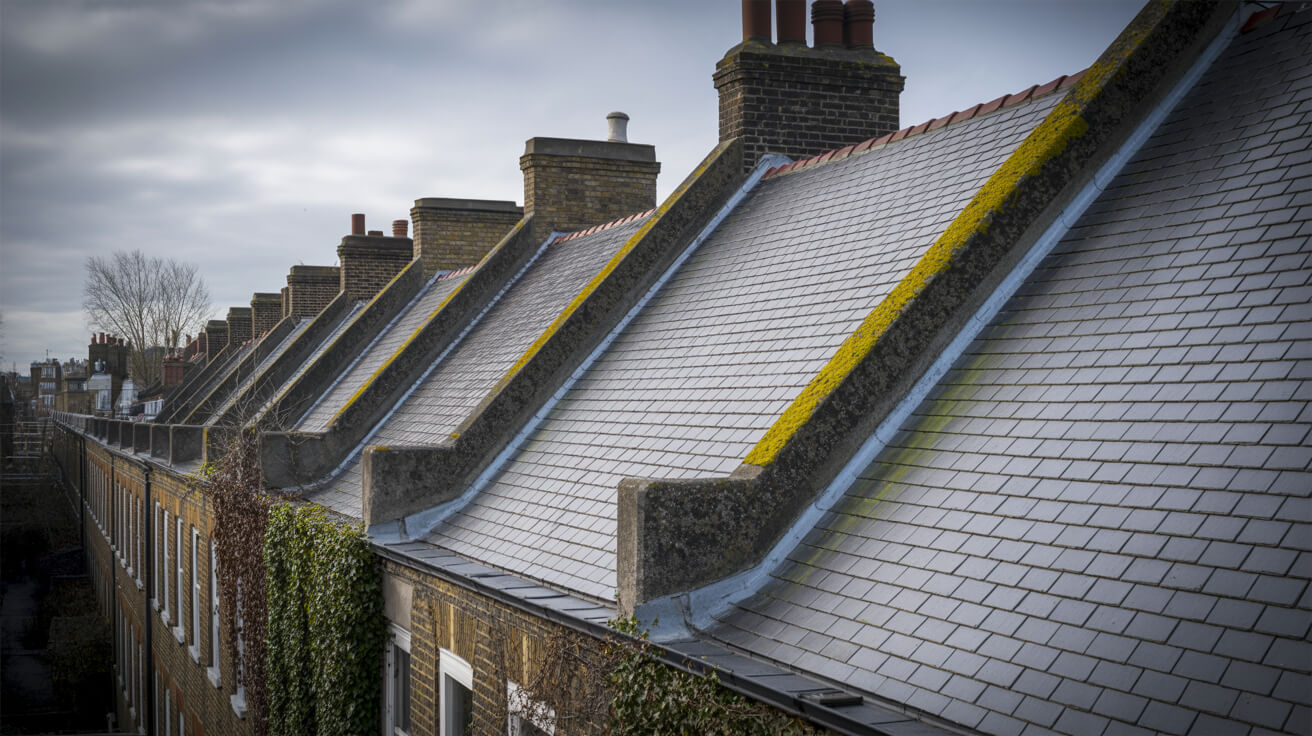
A thorough survey highlights existing issues, structural considerations, and upgrade opportunities, ensuring the best-fit solution is identified from the very beginning.
Transparent, itemised quotes detail costs, timelines, and materials—giving you complete clarity and confidence before work starts, with no hidden surprises.
Scaffolding, access solutions, and robust safety measures are put in place to safeguard both property and people throughout the project.
Skilled roofers complete the work using accredited materials and proven techniques, delivering durable, compliant results while keeping disruption to a minimum—whether for repairs, replacements, or new installations.
Each stage is inspected against manufacturer standards and Building Regulations, with photographic documentation provided for transparency and peace of mind.
Each stage is inspected against manufacturer standards and Building Regulations, with photographic documentation provided for transparency and peace of mind.
In a competitive roofing market, many providers look the same on paper. JG Leadwork and Roofing stands out through proven expertise, accredited methods, and specialist techniques. Our combination of traditional craftsmanship and modern technology makes us the safer, smarter choice across residential, commercial, industrial, and heritage projects.
In a competitive roofing market, many providers look the same on paper. JG Leadwork and Roofing stands out through proven expertise, accredited methods, and specialist techniques. Our combination of traditional craftsmanship and modern technology makes us the safer, smarter choice across residential, commercial, industrial, and heritage projects.
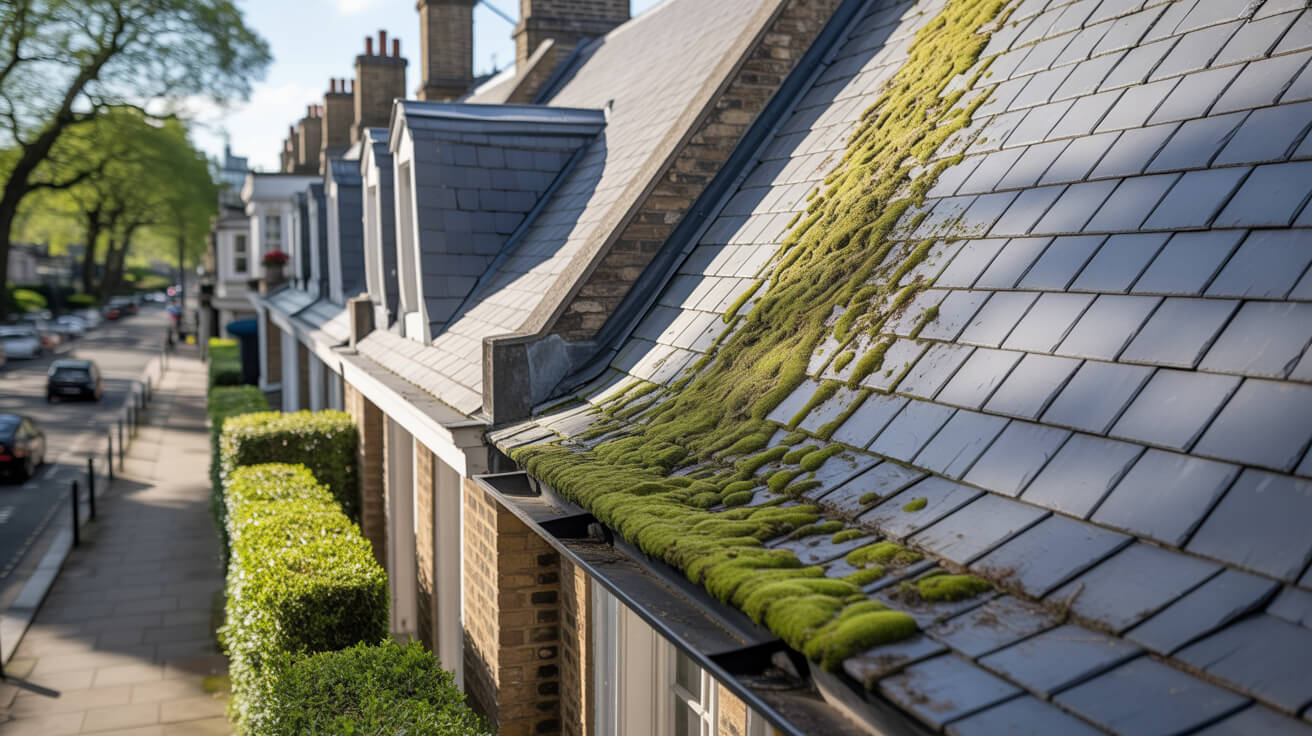

At JG Leadwork and Roofing, every project follows a structured QA process. Each stage—materials, installation, safety, and final sign-off—is measured against manufacturer specifications and UK Building Regulations to ensure durability, compliance, and warranty-backed performance across all roofing services.
Projects are only signed off once all QA checks are complete, giving clients confidence in long-term performance, structural safety, and insurance-backed peace of mind.
Every Moss Removal & Gutter Cleaning project by JG Leadwork and Roofing is delivered in strict alignment with UK Building Regulations and recognised frameworks. This ensures structural safety, energy efficiency, durability, and protects warranties and insurance coverage across residential, commercial, industrial, and heritage properties.
Clients can be confident their project is completed legally, safely, and insurance-ready—delivering long-term performance, compliance assurance, and complete peace of mind.
Property owners often wonder about Moss Removal & Gutter Cleaning—from costs and timescales to permissions. Below, you’ll find straightforward, trustworthy answers to the most frequent and practical queries.
Roof leaks following heavy rainfall are a common concern for property owners, and prompt diagnosis is crucial to prevent interior damage, energy loss, and escalating repair costs. In the UK, where intense rain, freeze–thaw cycles, and wind uplift are frequent, understanding the root causes is essential for both residential and commercial properties. This guide sets out the principal technical reasons your roof may let in water after storms and provides clear, practical clues to support inspection and ongoing maintenance.
One of the most frequent root causes of leaks is the deterioration of waterproof membranes or failure of the sealant layer that protects joints and seams, especially on flat roofs or flat areas of otherwise pitched roofs. Over time, exposure to ultraviolet (UV) light, ponding water, or temperature fluctuations causes these protective layers to become brittle, crack, or lift. As the membrane loses integrity, rainwater can penetrate through minute gaps, following the path of least resistance into the roof structure. Symptoms may include dark patches on ceilings, paint blistering, or soft spots in the roof deck. If ignored, this can progress to timber rot, insulation saturation, and eventually structural weakening.
Flashing refers to thin strips of metal or specialist tape installed at intersections—chimneys, vent pipes, skylights, and roof valleys—where two surfaces meet. Correct installation and maintenance of flashing and junction detailing are critical, as these are among the most vulnerable points on any roof. Flashings protect against capillary tracking, a process where water follows joints and edges into the building. Common causes of failure include thermal expansion (leading to splits), corrosion, or simply incorrect workmanship (such as inadequate overlapping). Visual clues include rust streaks, mortar fragments on the ground, or water marks around the inside of chimneys or roof windows. Leaks in these areas not only cause local staining but risk concealed ingress leading to damp in adjacent walls.
Flat and low-pitched roofs are particularly susceptible to ponding, where water collects in shallow depressions rather than draining away. UK best practice recommends no standing water 48 hours after rainfall, so any persistent puddling (usually more than 5 mm depth) is a warning sign. Standing water accelerates membrane degradation and increases the risk of leaks via microscopic holes formed through freeze–thaw cycling (where trapped water expands as it freezes, forcing splits into layer seams). Other environment-driven factors include debris buildup from moss, leaves, or bird activity, which can block gutters and downpipes, forcing water to back up beneath slates or tiles. Inadequate ventilation or insulation, especially in line with Part L Building Regulations, can also lead to interstitial condensation—the hidden accumulation of moisture within the roof build-up, which may escape as apparent leaks.
Effective leak diagnosis combines visual examination with modern technology. Initial surveys start with checking for displaced or cracked tiles, blistered flat roof coverings, and the physical state of lead flashings. For flat roofs, a moisture metre can identify damp spots in insulation or deck without invasive measures. Borescope cameras allow a view into concealed voids without lifting finishes. Thermal imaging highlights cold bridges or wet insulation, while drone surveys aid in spotting blocked gutters, splits, or ponding from above—particularly useful on larger or inaccessible roofs. For flat roofing systems, a core sample may be required to establish the precise point of water ingress relative to visible damage.
| Root Cause | Typical Symptom | Risk if Ignored | Indicative Remedy |
|---|---|---|---|
| Membrane cracks | Staining, spongy deck | Structural rot | Replace/patch membrane |
| Loose/corroded flashing | Damp near chimneys/valleys | Internal damp, plaster failure | Remove, re-bed, reseal flashing |
| Ponding water | Visible puddles, algae | Accelerated membrane breakdown | Correct falls, clear outlets |
| Blocked gutters/downpipes | Overflow, external streaks | Leak below eaves, wall damage | Clear debris, check gutter pitch |
| Inadequate ventilation | Musty odour, condensation | Mould, rot, insulation loss | Improve air flow, check insulation |
Heritage materials nearly always result in higher roofing costs, especially if your building is listed or in a conservation area. These materials—like Welsh slate, handmade clay tiles, and traditional lead—are harder to source and often require specialist skills and strict regulatory compliance. For property owners, project managers, or developers, understanding these differences is vital for accurate budgeting, maintaining compliance with UK rules, and avoiding unwanted delays.
The decision to use authentic heritage materials is often dictated by conservation requirements. While standard tiles or slates are widely available, heritage-grade products are typically reclaimed or produced by hand, making them more expensive and harder to obtain. Regulatory bodies like local planning departments and Historic England (for properties with listed status) enforce strict standards about what can be installed, how it should look, and even where the materials are sourced. Below is a breakdown of the specific cost and regulatory factors involved.
If your property is listed or within a conservation area, planning authorities usually insist on repairing or replacing roof coverings with materials that match the original. Genuine Welsh slate, hand-pressed clay tiles, or milled lead sheeting can cost several times more than modern alternatives. For example, reclaimed or heritage-grade slate is typically priced at £80–£120 per m², compared with £30–£50 per m² for new concrete tiles. The price premium reflects both rarity and more complex supply chains.
Unlike generic “heritage look” alternatives, only authentic products are accepted for listed or protected buildings. Conservation officers may demand evidence of provenance, and shortcuts (such as substituting modern tiles for historic slate) are frequently rejected.
Skilled heritage roofers are essential when working with period materials. Techniques such as traditional lead “dressing” or random-width slate laying involve intricate craftsmanship—work that takes more time and a higher level of expertise than standard roof replacements. Labour costs in London and the South East for this kind of work are commonly 50–100% higher than general roofing rates, with day rates of £300–£450 not uncommon.
Every installation must also meet BS 5534—the British Standard for slating and tiling. This governs details such as the number of fixings per slate or tile, ventilation allowances, and rafter spacing. These structural requirements often demand further upgrades to insulation or supporting timber, extending both costs and timescales.
Before undertaking work involving heritage materials, you’ll almost certainly need Listed Building Consent or local authority approval. This process can include documentation of original features, samples for review, or technical statements explaining any modifications. Submissions often require professional survey or planning fees, typically ranging from £500 to £2,000 depending on complexity.
Conservation officers can specify precise materials, manufacturers, or sources—sometimes insisting on locally quarried slates or handmade clay tiles to uphold building character. Skipping formal approval, or deviating from agreed specifications, risks enforcement notices and costly remedial work.
The following table outlines typical costs for heritage vs. modern alternatives:
| Factor | Heritage Grade | Modern Equivalent | Reason for Difference |
|---|---|---|---|
| Slate Tiles (per m²) | £80–£120 | £30–£50 | Handmade, reclaimed; scarce supply |
| Clay Tiles (per m²) | £60–£95 | £20–£35 | Bespoke vs. mass-produced |
| Lead Flashing (per m) | £30–£60 | £10–£20 | Thicker, hand-worked; more time-intensive |
| Skilled Labour (per day) | £300–£450 | £180–£250 | Heritage specialist vs. general roofing |
| Planning/Survey Fees | £500–£2,000+ | £0–£500 | Extra steps for heritage approval |
Before planning a heritage roofing project, obtain an up-to-date roof survey and confirm any listing or conservation restrictions on your property. Consult building regulations like Part L (energy efficiency requirements), and weigh the balance between preserving originality and achieving modern insulation or structural performance.
Include not only material and skilled labour costs in your budget, but also administrative hurdles, planning approval delays, and ongoing maintenance obligations. While heritage roofs are prized for longevity and historic value, unexpected requirements or sourcing delays can mean budgets and timelines need to be carefully managed from the start.
For most UK homes and commercial properties, the time required to instal a new roof depends on several factors: the roof type, overall size, shape, chosen materials, property access, and the famously unpredictable British weather. Typically, a standard pitched tile or slate roof on a mid-sized house is completed in between 4 and 7 working days, starting from scaffolding to final handover—provided the weather holds and timber repairs are limited. Flat roofs are often quicker—usually 2 to 4 days for an average-sized area. Heritage or unusually shaped roofs, or buildings with difficult access, can require several weeks. Understanding these timelines helps you plan for costs, schedule around disruptions, meet rental or business continuity requirements, and better protect your building investment.
Roof installation follows a clear sequence: site setup, removal of old coverings, timber repairs where needed, underlay and batten fitting, and installation of the surface material. For a modern pitched roof, expect:
Flat roofs—whether felt, EPDM rubber, or liquid coatings—can be quicker, often finished in 2–4 days, factoring in insulation upgrades and edge detailing. More intricate or heritage roofs—such as those with complex valleys, old chimneys, or specialist leadwork—may double these durations.
Numerous elements affect project timelines:
All roofs—regardless of age or type—require regular checks and basic care to ensure longevity and uphold any warranties. Typical recommendations are:
Consistent, proactive maintenance—including clearing moss and gutters—reduces risk of water ingress, spares underlay and timber from rot, and prevents damage from the freeze–thaw cycle (where water expands in cracks as it freezes). For larger blocks or managed properties, a formal roof survey every three to five years is best practice.
The lifespan of a roof depends chiefly on its material, the care taken during installation, and ongoing maintenance. A comparison snapshot is below:
| Material | Typical Lifespan | Inspection Frequency | Maintenance Needs |
|---|---|---|---|
| Natural Slate | 80–100 years | Every 5 years | Replace broken slates, check lead areas |
| Clay Tile | 50–70 years | Every 3–5 years | Replace cracked tiles, clear moss/debris |
| Felt (Bituminous) | 10–20 years | Every 2 years | Seal joints, patch splits when needed |
| Liquid-Applied | 25–40 years | Every 3 years | Recoat joints, check high-traffic patches |
| Single-Ply Membrane | 20–35 years | Every 2 years | Check seams/fixings, clear water outlets |
Maximising your roof’s lifespan means controlling moss (which retains water, causing surface degradation), keeping all drainage clear, and responding quickly to defects like loose tiles or minor leaks before they escalate. Allow about 3–7 days for most roof installations, budget for seasonal and property-specific risks, and plan routine inspections to preserve your building’s value over decades.
The true cost of moss removal, gutter cleaning, or roof replacement hinges on more than just surface quotes—it’s about protecting your budget, your building, and your long-term peace of mind. If you’re maintaining a property, overseeing a portfolio, or managing commercial assets, understanding how price, warranty terms, and installer credentials interact is the surest way to sidestep hidden risks, keep insurance valid, and avoid expensive surprises. Everyone wants clarity and predictability; making sense of the real numbers and guarantees is the first step.
What you pay for moss removal, gutter cleaning, or roof work is shaped by a mix of size, complexity, safety needs, and finish. Labour is a major driver—jobs requiring scaffolding or specialist safety access will always cost more. Specialist methods, such as eco-friendly biocide treatments or drone inspections, push prices higher, while straightforward maintenance remains more affordable. Breaking it down:
| Service Type | Typical Range (UK) | Key Influences |
|---|---|---|
| Gutter Cleaning | £60 – £180 | Length, access, property height |
| Moss Removal | £450 – £1,200+ | Method, area, roof material, access |
| Roof Repair (minor) | £250 – £1,200 | Leak location, extent, scaffolding |
| Roof Replacement | £5,000 – £15,000+ | Size, tiles/slates, insulation, finish |
Material selection also matters—bespoke membranes, repair systems, or heritage slates add cost, especially on older or protected buildings. Beware cut-price quotes from unverified operators, as these often skip proper guarantees or critical steps. Investing in thorough, compliant work upfront is almost always less costly than fixing failures after the fact.
Protect yourself with an insurance-backed warranty whenever possible, especially for any major roof replacement or large-scale moss remediation. Leading contractors typically issue warranties lasting 10–20 years, covering materials, workmanship, and the roof structure. If a workmanship error or hidden flaw causes problems years later, a warranty means the contractor (or their insurer) covers the fix—removing financial risk from your shoulders.
Warranty cover is increasingly tied to Part L compliance, the legal standard for roof insulation and energy performance in the UK. Insurers and lenders expect evidence of compliant, warranty-secured works when you file a claim, arrange a mortgage, or look to resell. Lack of proper assurance can jeopardise coverage or market value, especially after storms.
Selecting an accredited installer—one with NVQ Level 2/3 qualifications, CITB Health & Safety certification, or independent approvals from bodies like TrustMark or Which Trusted Trader—offers more than peace of mind. These credentials confirm the company is trained in the latest safety protocols, uses up-to-date methods (like BS5534 for pitched roofs), and is regularly vetted.
Only accredited installers can access manufacturer-backed warranties, which non-approved tradespeople cannot offer. This also guarantees the job meets Building Regulations, making council sign-off, insurance, and future sales straightforward. Rigorous training and oversight mean fewer errors, lower risk of failed inspections, and greater long-term protection.
Going cheap with your roof can trigger expensive headaches. Shortcuts such as overlaying new materials on rotten decking, skipping waterproof membranes, or bypassing insulation upgraded for Part L compliance lead directly to early decay—even voiding warranties. Moss removal with high-pressure washers strips protective layers, causing fast-track damage.
The financial risks are real:
In roof care, hiring trusted, accredited professionals and securing clear warranties isn’t a luxury—it’s how you lock in financial predictability and future-proof your asset.